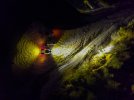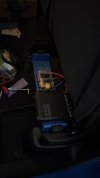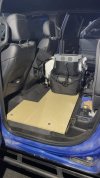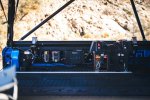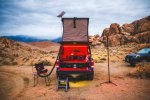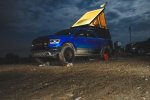boogielander
Spends too much time on here
- Joined
- Jun 29, 2022
- Messages
- 2,364
- Reaction score
- 4,085
- Points
- 113
This technical post was first posted to Jolly Rogue Co's Blog here on 3/30/2024. You can find all of my instructional and technical postings here
Introduction
Electrical systems are critical to a successful modern overlanding trip. Everything that we rely on for a good overlanding experience relies on various reliable electrical systems that are added aftermarket. In this article, I will be going over an in-depth view of the most current version of electrical systems I have installed and explain the logic behind them.
Note: This will overlap sections of Part 2 and 3 of my build journals, but more thoroughly explained.
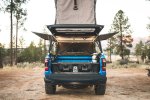
The Basics: Defining What is What
To make things easier to understand, I believe aftermarket electrical systems can be categorized into two major categories: vehicular and recreational.
What is prioritizing vehicular system?
Prioritizing vehicular system means spending money on quality, proven, US branded or made in USA parts instead of saving money on cheap, unproven foreign made parts. These are the components that determine whether you can see (at night) or be seen (both daytime and nighttime). You don’t want your components to fail when you need them to work and end up getting in a collision because other people are not aware of your presence due to visibility issues.
As a professional outfitter and a relatively experienced overlander/ offroader, below are the only brands that I run and recommend:
For switch systems, many people elect to use Auxbeam or some other cheap systems. Of all the systems available on the market, the only other system I recommend is sPod. sPod is also found on podium winning trucks and professional vehicles. Again, use common sense when choosing systems: why is Switch-Pro 9100 a $650 system but an Auxbeam is only $170? If a system can be sold that cheaply while retaining profit margin from parts, labor, transportation cost from China, and administration costs, I can only assume the parts used are of least amount of quality that will not stand up to years of usage.
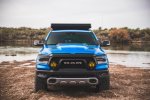
Vehicular System
There are three critical areas on my vehicular system: Switch, Lights, and Air Compressor.
Switch System
The key component here is Switch-Pro 9100. This is a reliable and high-performance item that I’ve been running since 2017. For more information on this panel, please visit Part 2 of my build journal here.
Switch system is critical. It is what enables you to turn lights on and off. As previously mentioned, functioning lights are critical for you to see and be seen to avoid possible collisions and therefore, makes it a safety item.
Lights
Lights are what let you see and be seen. To this end, you need something that is proven to be reliable and performs. Lighting output can be categorized into a few areas: close range, mid range, long range, signal, and peripheral.
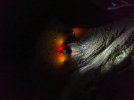
Stock Low Beam and Fog Light
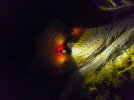
Baja Designs LP6, Driving Combo, Low Beam (close range)
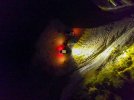
Baja Designs, LP6, Driving Combo, High Beam (with Spot Light), Mid Range

Baja Designs, Squadron XL Racers Edition, Spot Light, Long Range (notice the hot spot on the right)
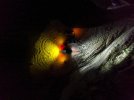
Baja Designs, S2, Wide Corner, Amber Lenses, Chase Lights (Signal)

Diode Dynamic SSC1 Pro, using my friend’s truck as reference. These supplement the areas that forward lights do not focus on.
Air Compressor
Airing down is a must when hitting trails. By reducing tire air pressure, your tires will have more grip and your truck will give you a more comfortable ride quality. In addition, airing down also protects your tires from sharp rocks and edges found on the trails as the tires now have a bigger surface area to work on those objects. When you are done with the trails and ready to hit pavement to go home, you will need to pump air pressure back into the tires. This is when a reliable air compressor comes in handy. Driving on pavement with underinflated tires is dangerous and can lead to premature wear, damages on the tires and wheels, and even cause fatal accidents.
In addition, having a reliable air compressor is beneficial if you know how to plug punctured tires. Plugging punctured tires allows you to keep the spare as spare, and essentially gives your tire a second chance instead of putting it out of commission for the trip. This is very important when participating in long-term expeditions or going to places that do not have a steady supply of tires of your choice. Remember, two is one and one is none.
Because of these benefits, I categorize air compressors as part of the safety items that should be prioritized.
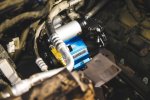
ARB Single Compressor, Mounted in Engine Bay using NH Overland Compressor Mount.
continue below
Introduction
Electrical systems are critical to a successful modern overlanding trip. Everything that we rely on for a good overlanding experience relies on various reliable electrical systems that are added aftermarket. In this article, I will be going over an in-depth view of the most current version of electrical systems I have installed and explain the logic behind them.
Note: This will overlap sections of Part 2 and 3 of my build journals, but more thoroughly explained.

The Basics: Defining What is What
To make things easier to understand, I believe aftermarket electrical systems can be categorized into two major categories: vehicular and recreational.
- Vehicular:
- I define vehicular electrical systems as safety related items that determine whether you will get home or not. Examples of vehicular electrical systems such as lights, switches, and air compressors.
- Recreational:
- I define recreational electrical systems as leisure items that determine whether you will have a good experience or not. Examples include fridge, camper lights, satellite internet systems, and air conditioning systems.
What is prioritizing vehicular system?
Prioritizing vehicular system means spending money on quality, proven, US branded or made in USA parts instead of saving money on cheap, unproven foreign made parts. These are the components that determine whether you can see (at night) or be seen (both daytime and nighttime). You don’t want your components to fail when you need them to work and end up getting in a collision because other people are not aware of your presence due to visibility issues.
As a professional outfitter and a relatively experienced overlander/ offroader, below are the only brands that I run and recommend:
- Switch systems: Switch-Pro
- Found on many podium winning race trucks and professional vehicles. If it’s good enough to handle Baja 1000, it is more than good enough for me since I’ll never abuse it to that level.
- Lights: Baja Designs (BD)
- Also found on many podium winning race trucks, professional vehicles, and even heavy industrial equipment. BD also created many tools to help consumers understand what light they need for what application scientifically such as Effective Light Score and Lighting Zones.
- Compressor: ARB (single or twin)
- Well-known Australian brand that is expert in overlanding equipment.
For switch systems, many people elect to use Auxbeam or some other cheap systems. Of all the systems available on the market, the only other system I recommend is sPod. sPod is also found on podium winning trucks and professional vehicles. Again, use common sense when choosing systems: why is Switch-Pro 9100 a $650 system but an Auxbeam is only $170? If a system can be sold that cheaply while retaining profit margin from parts, labor, transportation cost from China, and administration costs, I can only assume the parts used are of least amount of quality that will not stand up to years of usage.

Vehicular System
There are three critical areas on my vehicular system: Switch, Lights, and Air Compressor.
Switch System
The key component here is Switch-Pro 9100. This is a reliable and high-performance item that I’ve been running since 2017. For more information on this panel, please visit Part 2 of my build journal here.
Switch system is critical. It is what enables you to turn lights on and off. As previously mentioned, functioning lights are critical for you to see and be seen to avoid possible collisions and therefore, makes it a safety item.
Lights
Lights are what let you see and be seen. To this end, you need something that is proven to be reliable and performs. Lighting output can be categorized into a few areas: close range, mid range, long range, signal, and peripheral.
- Close range:
- These lights are for areas immediately to the front of your truck. Think of areas that your headlights light up or closer. Fog lights are part of the close range.

Stock Low Beam and Fog Light

Baja Designs LP6, Driving Combo, Low Beam (close range)
- Mid range:
- These are for areas further than your headlights and should give you ample distance to slow down if obstacle approaches. For speed under 40MPH mid range is plenty enough

Baja Designs, LP6, Driving Combo, High Beam (with Spot Light), Mid Range
- Long range:
- These are areas way ahead. This is important if you travel at high speed on the trail, so you have more than enough distance to slow down. For speed between 40MPH to 100MPH+ you want to have long range.

Baja Designs, Squadron XL Racers Edition, Spot Light, Long Range (notice the hot spot on the right)
- Signal:
- These lights are used to signal others of your presence and should be used both during day and night time. Chase lights, or rear mounted auxiliary lights, fall into this category. When choosing signal lights, you want to use lights with amber lenses so the light output can penetrate through dust or other things that affect visibility. Using Switch-Pro 9100, I can either leave them constant on or set them to burst strobe to grab attention from vehicles behind me.

Baja Designs, S2, Wide Corner, Amber Lenses, Chase Lights (Signal)
- Peripherial
- These are used for side and secondary locations. Many people use ditch lights to help them see areas close to their fenders when navigating tighter trails, mount them on the side for scenic lights, or even as rock lights for when rock crawling. These lights are secondary and completely optional in my opinion and experience.

Diode Dynamic SSC1 Pro, using my friend’s truck as reference. These supplement the areas that forward lights do not focus on.
Air Compressor
Airing down is a must when hitting trails. By reducing tire air pressure, your tires will have more grip and your truck will give you a more comfortable ride quality. In addition, airing down also protects your tires from sharp rocks and edges found on the trails as the tires now have a bigger surface area to work on those objects. When you are done with the trails and ready to hit pavement to go home, you will need to pump air pressure back into the tires. This is when a reliable air compressor comes in handy. Driving on pavement with underinflated tires is dangerous and can lead to premature wear, damages on the tires and wheels, and even cause fatal accidents.
In addition, having a reliable air compressor is beneficial if you know how to plug punctured tires. Plugging punctured tires allows you to keep the spare as spare, and essentially gives your tire a second chance instead of putting it out of commission for the trip. This is very important when participating in long-term expeditions or going to places that do not have a steady supply of tires of your choice. Remember, two is one and one is none.
Because of these benefits, I categorize air compressors as part of the safety items that should be prioritized.

ARB Single Compressor, Mounted in Engine Bay using NH Overland Compressor Mount.
continue below
Last edited:

